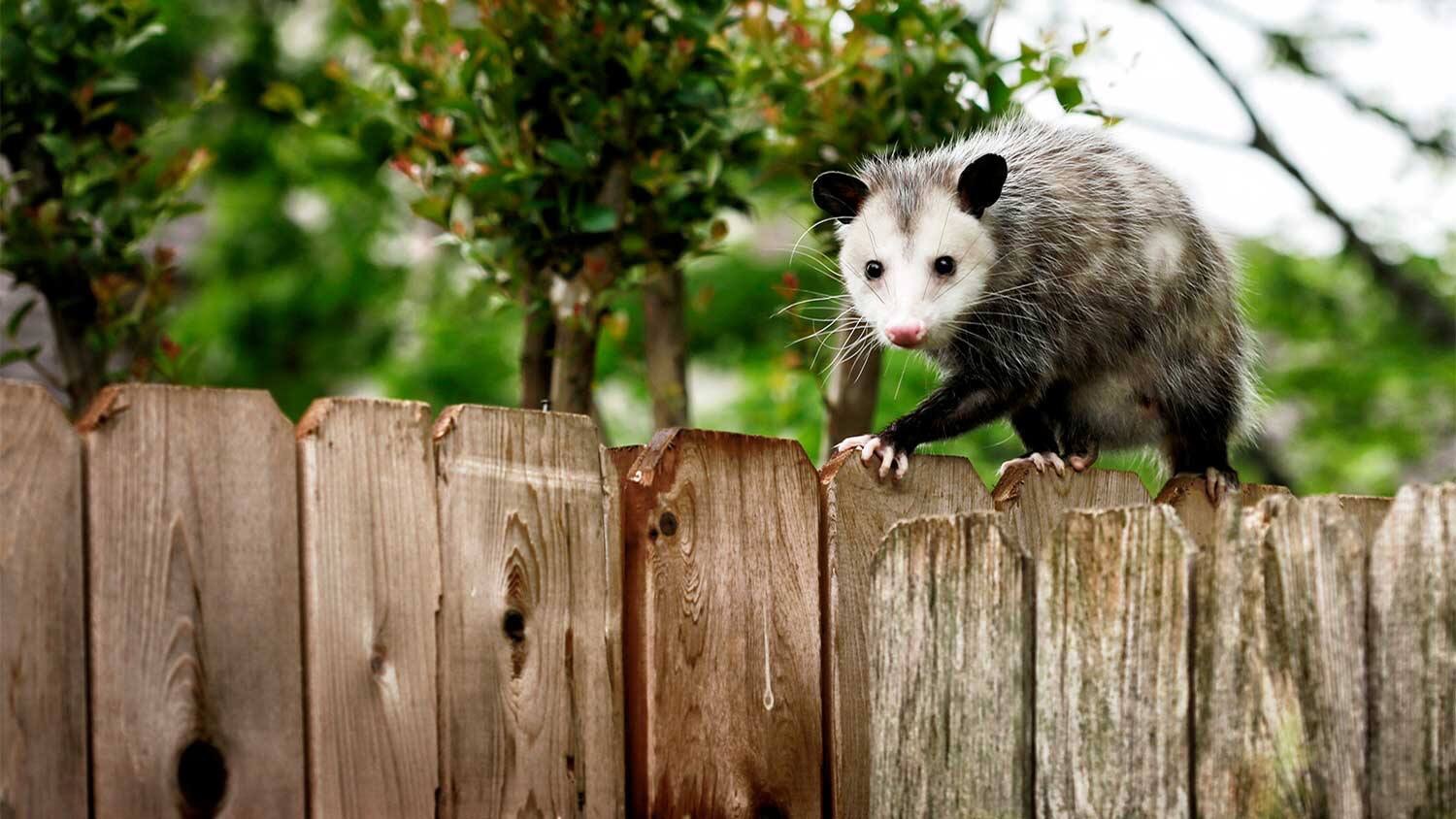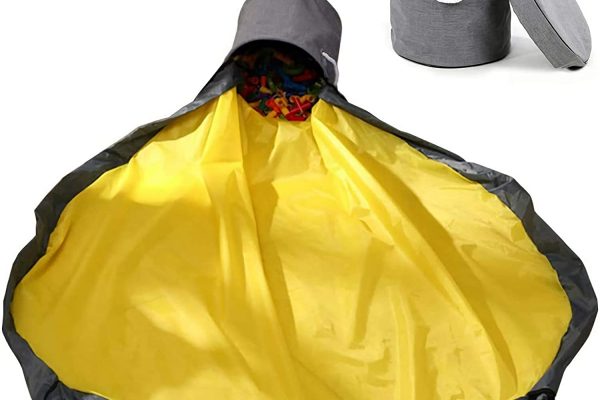

Articles
How To Get Rid Of Possums In Your Attic
Modified: December 7, 2023
Learn effective techniques and tips to safely remove possums from your attic. Read our informative articles on how to get rid of possums and regain control of your home.
(Many of the links in this article redirect to a specific reviewed product. Your purchase of these products through affiliate links helps to generate commission for Storables.com, at no extra cost. Learn more)
Introduction
Having possums in your attic can be a frustrating and concerning problem. These nocturnal creatures can cause damage to your property and pose a health risk to you and your family. If you’re dealing with a possum infestation, it’s important to take swift action to remove them from your attic and prevent them from returning.
In this article, we will provide you with a comprehensive guide on how to get rid of possums in your attic. We will discuss the signs of possum infestation, the health risks they pose, and various methods you can use to remove them. We will also share prevention techniques to keep possums out of your attic for good.
Before we delve into the details, it’s essential to have a basic understanding of possums and their behavior.
Key Takeaways:
- Swiftly address possum infestations by identifying signs, prioritizing safety, and preparing for removal using non-lethal methods. Prevent future infestations with thorough sealing and maintenance techniques.
- Prioritize humane and ethical possum control through non-lethal removal methods, while considering lethal methods as a last resort. Implement preventive measures to keep possums out of your home effectively.
Understanding Possums
A possum is a small to medium-sized marsupial that is native to Australia, but can also be found in other parts of the world, such as North America. They are characterized by their furry bodies, long tails, and sharp claws. Possums are known for their adaptability and ability to live in a variety of environments, including urban areas.
Possums are primarily nocturnal animals, meaning they are most active during the night. They are omnivorous, feeding on a diet that includes fruits, vegetables, insects, small animals, and even garbage. They have a keen sense of smell and use their sharp claws and teeth to forage for food.
One of the reasons possums can become a nuisance is their tendency to seek shelter in human-made structures, such as attics. Attics provide possums with a warm and cozy space to nest and raise their young. However, their presence can lead to damage to insulation, wiring, and structural components.
It’s important to note that possums are protected in some regions, so it’s crucial to familiarize yourself with local laws and regulations before taking any action. In some cases, you may require a permit or need to hire a licensed professional to handle possum removal.
Now that we have a better understanding of possums, let’s move on to the signs that indicate a possum infestation in your attic.
Signs of Possum Infestation
Identifying the signs of a possum infestation in your attic is essential in addressing the issue promptly. Here are some common signs that may indicate the presence of possums:
1. Noises: The sound of scratching, scurrying, or thumping coming from your attic, especially during the night, can be a clear indication of possum activity. Possums are agile climbers, and you may hear them moving around or running across your attic.
2. Odor: A strong, musky odor in your attic or in the surrounding areas can be a sign of possum presence. Possums have scent glands that release a distinct smell to mark their territory.
3. Droppings: Possum droppings are small, cylindrical, and typically dark in color. If you find droppings in your attic, it could be an indication that possums are using the space as a nest or feeding area.
4. Damage: Possums can cause damage to insulation, wiring, and other materials in your attic. Look for chewed or torn insulation, wires that have been gnawed on, or signs of nesting materials, such as shredded paper or leaves.
5. Entry Points: Check for any openings or gaps in your attic that could serve as entry points for possums. Possums can squeeze through small openings, so ensure that all potential entry points are sealed properly.
6. Visual sightings: If you spot a possum entering or exiting your attic or observe them around your property, it’s a clear sign that you have a possum infestation.
It’s important to note that while these signs indicate a possum infestation, it’s always best to confirm their presence before taking any action. Consult with a professional wildlife removal service or contact your local animal control agency to properly identify the species and develop a suitable removal plan.
Health Risks of Possums in the Attic
Having possums in your attic not only poses a risk to your property but also presents potential health hazards. It’s crucial to be aware of these risks and take the necessary steps to protect yourself and your family. Here are the main health risks associated with possum infestations:
1. Spread of Diseases: Possums can carry various diseases, including leptospirosis, tuberculosis, salmonellosis, and toxoplasmosis. These diseases can be transmitted through direct contact with possum droppings, urine, or by handling infected animals. Inhaling dust particles contaminated with possum waste can also lead to respiratory issues.
2. Fleas and Ticks: Possums are known carriers of fleas and ticks, which can easily infest your home and pose a risk to your pets and family members. Fleas and ticks can transmit diseases such as Lyme disease and flea-borne typhus.
3. Allergens: Possum droppings, fur, and saliva may contain allergenic particles that can trigger allergic reactions and respiratory problems, particularly in individuals with pre-existing sensitivities or asthma.
4. Parasites: Possums can host external parasites such as mites and lice, which can be transferred to humans or other animals if proper precautions are not taken. These parasites can cause itching, irritation, and dermatological issues.
5. Structural Damage: Possums can cause significant damage to your attic, insulation, and electrical wiring. Chewed wires pose a fire hazard, while damaged insulation can affect the energy efficiency of your home and require costly repairs.
To protect yourself from these health risks, it’s important to avoid direct contact with possums and their waste. Always wear gloves, a mask, and protective clothing when cleaning up possum droppings or handling any materials that may be contaminated. Dispose of waste materials in sealed garbage bags to prevent the spread of disease-causing organisms.
If you suspect a possum infestation in your attic, it is advisable to seek professional assistance. Wildlife removal experts have the necessary knowledge, experience, and equipment to safely and effectively remove possums while minimizing the health risks associated with their presence.
Preparing for Possum Removal
Before initiating the possum removal process, it’s important to make some preparations to ensure a smooth and successful operation. Taking the following steps will help make the removal process more efficient:
1. Assess the Infestation: Start by assessing the extent of the possum infestation in your attic. Determine how many possums are present, their nesting areas, and any potential entry points they are using. This information will help you develop a targeted removal plan.
2. Secure Food Sources: Remove any potential food sources from around your home, such as bird feeders or pet food left outside. Possums are attracted to easily accessible food, so eliminating these sources can discourage them from staying in the vicinity.
3. Inspect and Seal Entry Points: Conduct a thorough inspection of your attic and surrounding areas to identify any openings or gaps that possums may be using to access your home. Seal these entry points with sturdy materials, such as hardware cloth or metal flashing, to prevent re-entry.
4. Gather Necessary Tools: Ensure you have the appropriate tools and equipment for possum removal. This may include a sturdy ladder, gloves, a mask, a trap (if using a non-lethal method), and a live animal cage for relocation.
5. Inform Household Members: Inform all members of your household about the possum removal process and emphasize the importance of staying away from the attic area during the operation. This will help avoid unnecessary disturbances and potential injuries.
6. Consider Professional Help: If you are unsure or uncomfortable with removing the possums yourself, it’s best to seek professional assistance. Wildlife removal experts have the knowledge, experience, and proper equipment to handle possum removal safely and effectively.
Remember, it’s important to comply with local laws and regulations when dealing with possum removal. In some areas, possums may be protected, and it may be necessary to obtain permits or seek assistance from licensed professionals.
By following these preparation steps, you’ll be ready to tackle the possum removal process and ensure a successful outcome. Next, we’ll discuss non-lethal methods for removing possums from your attic.
Seal all entry points to prevent possums from entering the attic, use bright lights or loud noises to encourage them to leave, and consider using a humane trap to remove them from the attic.
Non-Lethal Methods for Removing Possums
When it comes to possum removal, non-lethal methods are often the preferred approach as they are humane and help to preserve the natural balance of wildlife. Here are some effective non-lethal methods you can use to remove possums from your attic:
1. One-Way Exclusion Funnel: Install a one-way exclusion funnel over the main entry point used by possums. This funnel allows the possums to exit the attic but prevents them from re-entering. Leave the funnel in place for a few nights to ensure all possums have left before permanently sealing the entry point.
2. Live Traps: Set up live traps in your attic to capture the possums. Use baits such as fruits or vegetables to entice them into the trap. Once caught, handle the trap with care and release the possum in a suitable location far away from your property.
3. Ultrasonic Repellents: Install ultrasonic devices that emit high-frequency sounds in your attic. These sounds are unpleasant to possums and can deter them from staying in the area. Keep in mind that the effectiveness of these devices may vary, and it may take time for possums to be affected by them.
4. Bright Lights and Loud Noises: Possums are nocturnal animals, so using bright lights or playing loud noises in the attic can disturb their sleep patterns and encourage them to leave. Leave the lights on or play loud music for a few nights to make the attic less desirable for possums.
5. Beneficial Predators: Encourage the presence of natural predators, such as owls or non-aggressive dogs, in your yard. These predators can help in deterring possums from entering your property in the first place.
It’s important to exercise patience when using non-lethal methods, as possums may take time to respond and leave your attic. Regularly check the traps or exclusion funnels to ensure they are working effectively and release captured possums promptly.
Remember, once you have successfully removed the possums from your attic, it’s essential to address any potential entry points and seal them off to prevent re-entry. This will help maintain a possum-free environment in your home.
In situations where non-lethal methods are not feasible or have been unsuccessful, it may be necessary to explore lethal methods for possum removal. We will discuss these methods in the next section.
Lethal Methods for Removing Possums
Lethal methods should always be considered as a last resort for possum removal, and they should be used only when other options have been exhausted or deemed ineffective. It’s important to understand and comply with local laws and regulations regarding the use of lethal methods for possum control. Here are a few common lethal methods:
1. Professional Trapping and Euthanasia: Hiring a professional wildlife removal service is one option for using lethal methods. In this method, licensed professionals will set traps to catch the possums and then humanely euthanize them according to legal requirements.
2. Humane Traps and Dispatch: Humane traps can also be used for lethal removal. Set up the traps in the attic and bait them with appropriate food. Once the possum is trapped, it can be humanely dispatched using approved methods. However, it’s crucial to ensure that the method used is humane and complies with local regulations.
3. Poisoning: The use of poison as a method of possum control is highly discouraged and generally illegal. It poses significant risks to non-target animals and can be inhumane. Poisoning should be avoided unless specifically prescribed and carried out by professionals following legal and ethical guidelines.
It’s important to note that lethal methods should always be a last resort and considered only in extreme situations. It’s crucial to prioritize the safety of both humans and wildlife and to adhere to local regulations when opting for lethal control methods.
Additionally, it’s recommended to consult with wildlife management authorities, pest control professionals, or local animal control agencies for guidance on the most suitable approach for your specific situation.
Once a possum has been removed lethally, the same preventive measures, such as sealing potential entry points, should be implemented to prevent further possum infestations in the future.
Remember, promoting coexistence and using non-lethal methods whenever possible is a more ethical and sustainable approach to possum control.
Prevention Techniques to Keep Possums Out
Preventing possums from entering your attic is the key to avoiding future infestations. By implementing the following prevention techniques, you can effectively keep possums out of your home:
1. Seal Entry Points: Inspect your attic and the exterior of your home for any openings or gaps that possums could use to gain entry. Seal these entry points with materials such as hardware cloth, sheet metal, or caulk to prevent possums from accessing your attic.
2. Trim Overhanging Trees: Possums are excellent climbers and often use overhanging branches as access points to roofs and attics. Trim branches that are close to your home and ensure there is a significant distance between trees and your roofline.
3. Install Chimney Caps and Vent Covers: Place caps on chimneys and covers on vents to prevent possums from entering through these openings. Ensure these covers are made of sturdy material that possums cannot easily remove or chew through.
4. Secure Garbage Containers: Possums are attracted to easily accessible food sources such as garbage. Use tightly sealed, animal-proof garbage containers or bins to discourage possums from foraging in your yard.
5. Remove Food Sources: Possums are opportunistic feeders. Avoid leaving pet food or bird feeders out overnight, as they can attract possums. Securely store food in tightly sealed containers indoors.
6. Keep Your Yard Clean: Remove fallen fruits, nuts, and other debris from your yard regularly. These can serve as potential food sources for possums, attracting them to your property.
7. Install Motion-Activated Lights and Sprinklers: Possums prefer dark, quiet areas, so installing motion-activated lights or sprinklers can deter them. The sudden illumination or spray of water can startle possums and discourage them from approaching.
8. Use Repellents: Natural possum repellents such as vinegar, ammonia, or strong-smelling plants like lavender and mint can help deter possums. Spray these substances around potential entry points and areas where possums are likely to access your property.
9. Maintain Your Property: Regularly maintain your property, including trimming overgrown vegetation and keeping your yard well-maintained. Possums are less likely to make themselves at home in a clean and well-manicured environment.
By implementing these prevention techniques, you can significantly reduce the likelihood of possum infestations. Always remember to treat possums with respect and prioritize their coexistence with humans whenever possible.
Conclusion
Dealing with possums in your attic can be a challenging and concerning situation. However, by understanding their behavior, identifying the signs of infestation, and taking appropriate measures, you can effectively remove possums from your attic and prevent them from returning.
We discussed the importance of recognizing the signs of possum infestation, such as noises, droppings, and damage, as well as the health risks they pose. It is crucial to prioritize your safety and take proper precautions when handling possums or their waste.
Preparing for possum removal is essential and involves assessing the infestation, securing food sources, inspecting and sealing entry points, gathering necessary tools, and informing household members of the operation. Non-lethal methods, such as using exclusion funnels, live traps, ultrasonic repellents, and bright lights, can be effective in removing possums from your attic.
If non-lethal methods are unsuccessful or not feasible, there are also lethal methods available, such as professional trapping and euthanasia. However, it’s crucial to adhere to local laws and regulations and consider lethal methods as a last resort.
Prevention is key to keeping possums out of your home. Sealing entry points, trimming overhanging trees, securing garbage containers, removing food sources, and using repellents are important preventive techniques that can help reduce the risk of future infestations.
In conclusion, dealing with possums in your attic requires patience, knowledge, and proper planning. By implementing the methods and techniques discussed in this article, you can successfully remove possums from your attic and create a possum-free environment. Remember to prioritize the wellbeing of both humans and wildlife, and consult with professionals or local authorities for guidance when needed.
Frequently Asked Questions about How To Get Rid Of Possums In Your Attic
Was this page helpful?
At Storables.com, we guarantee accurate and reliable information. Our content, validated by Expert Board Contributors, is crafted following stringent Editorial Policies. We're committed to providing you with well-researched, expert-backed insights for all your informational needs.















0 thoughts on “How To Get Rid Of Possums In Your Attic”